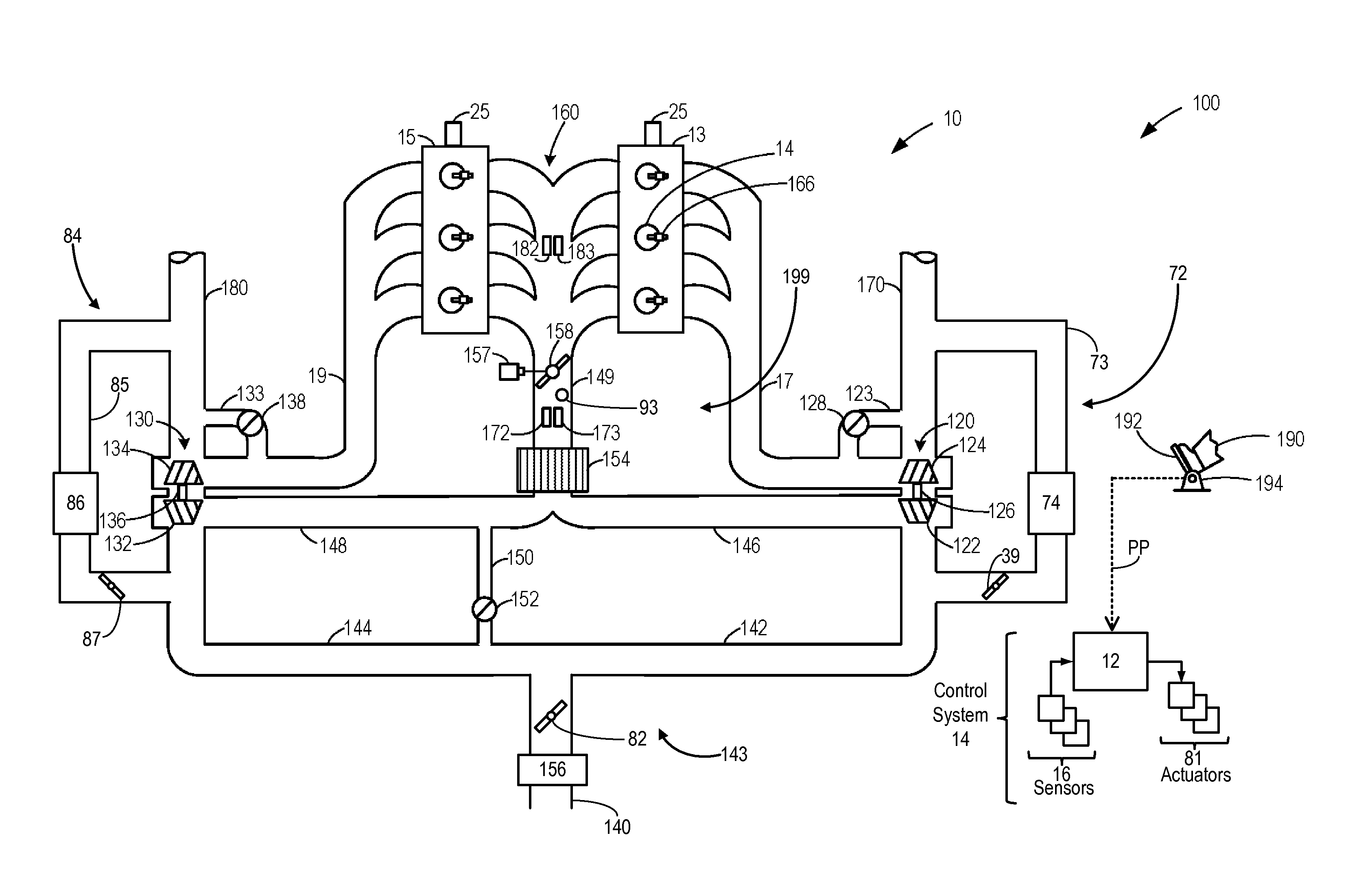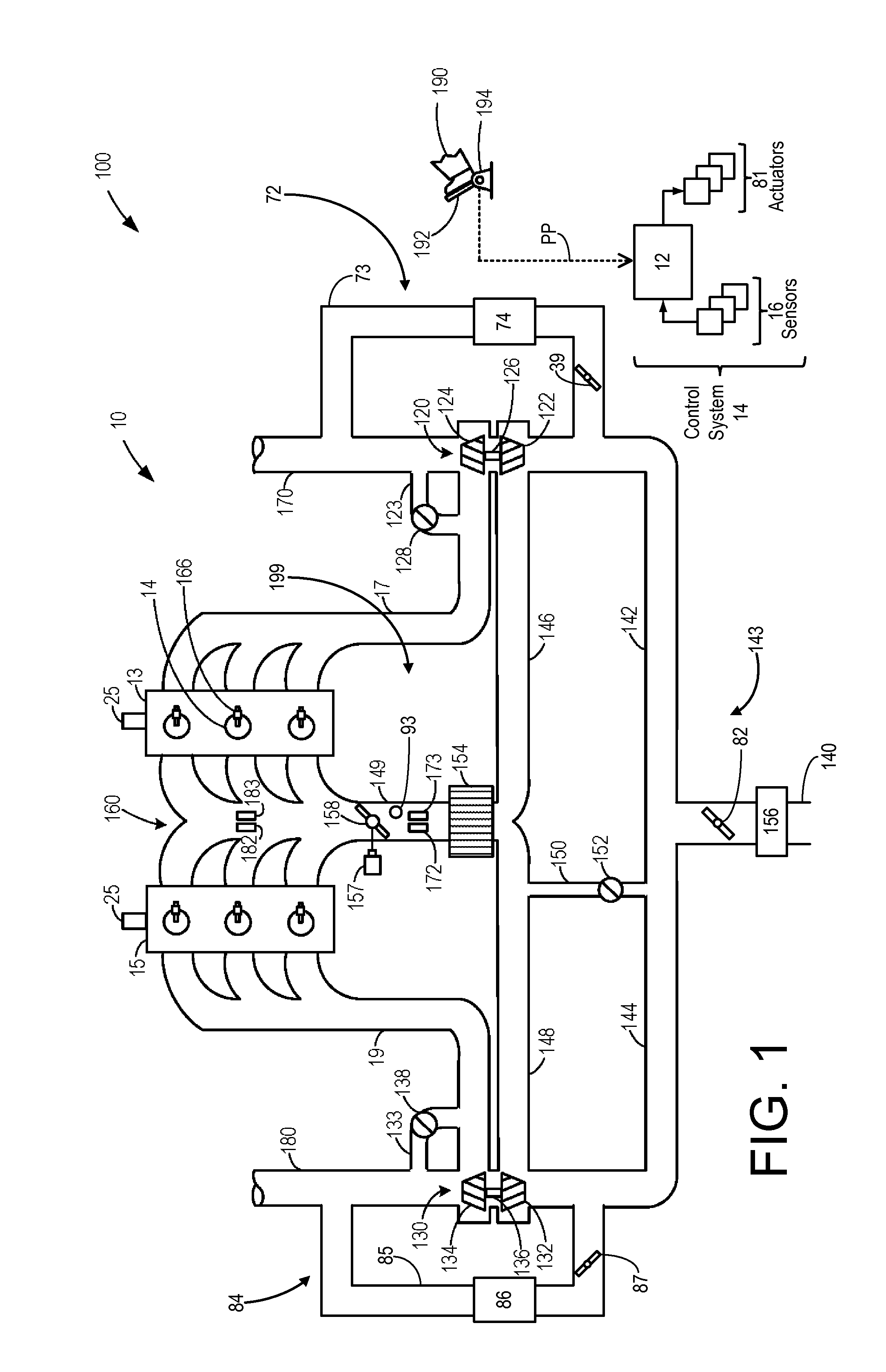Exhaust gas recirculation control
- Summary
- Abstract
- Description
- Claims
- Application Information
AI Technical Summary
Benefits of technology
Problems solved by technology
Method used
Image
Examples
Embodiment Construction
[0012]The following description relates to systems and methods for controlling an exhaust gas recirculation valve in an engine, e.g., the engine system shown in FIG. 1, by determining errors in exhaust backpressure estimates and adapting EGR flow estimations based on these errors to meet target EGR dilutions in the engine. As shown in FIGS. 2 and 3, errors in exhaust back pressure determination based on a desired EGR rate and an actual rate determined via an intake air oxygen sensor may be used to adapt pressure estimations across the EGR valve so that a target EGR flow rate may be accurately achieved. Further, errors between actual and desired intake oxygen concentrations may be used to adaptively update exhaust back pressure estimations to control the EGR valve to meet target EGR dilutions in the engine. By determining errors in exhaust backpressure estimates and adapting EGR flow estimations based on these errors, increased accuracy in EGR valve control may be achieved thereby po...
PUM
 Login to View More
Login to View More Abstract
Description
Claims
Application Information
 Login to View More
Login to View More - R&D
- Intellectual Property
- Life Sciences
- Materials
- Tech Scout
- Unparalleled Data Quality
- Higher Quality Content
- 60% Fewer Hallucinations
Browse by: Latest US Patents, China's latest patents, Technical Efficacy Thesaurus, Application Domain, Technology Topic, Popular Technical Reports.
© 2025 PatSnap. All rights reserved.Legal|Privacy policy|Modern Slavery Act Transparency Statement|Sitemap|About US| Contact US: help@patsnap.com



